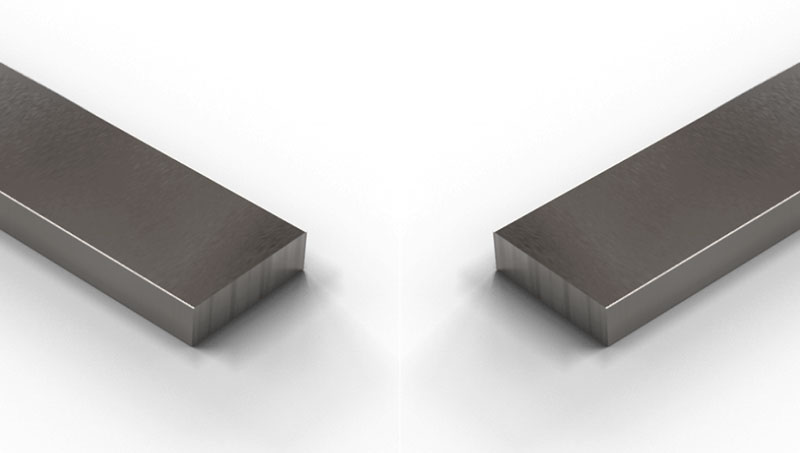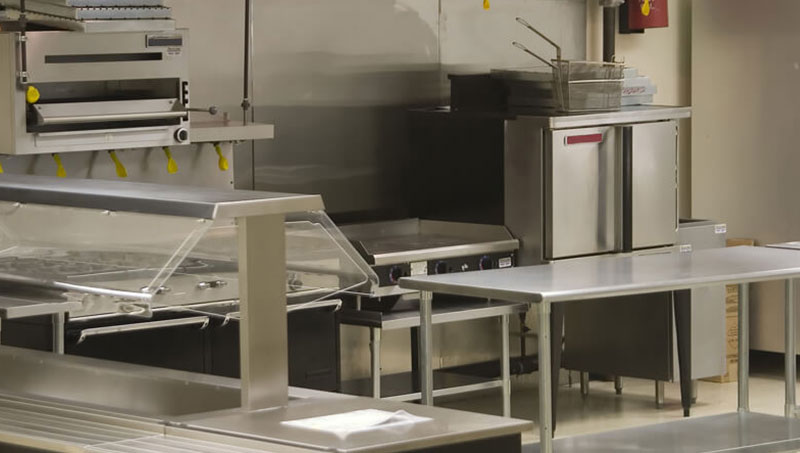Stainless steel 304 vs 316
Which type is right for you?
Stainless steel, also known as AISI or Inox, is a widely used material that is known for its durability and corrosion resistance. There are different types of stainless steel, but the two best-known types of AISI are 304 stainless steel and 316 stainless steel. Although they look similar at first glance, they have some important differences. In this article, both types of stainless steel are highlighted and we will answer frequently asked questions.

What is AISI 304?
Stainless steel 304 is one of the most commonly used and cheapest types of stainless steel. It contains 18% chromium and 8% nickel and has a low carbon content. 304 Stainless steel is popular because of its good corrosion resistance and excellent weldability. The material is often used in the food industry, architecture, kitchens and medical equipment.
What is AISI 316?
Stainless steel 316 is another common type of stainless steel. It also contains 18% chromium, but has a higher nickel content than stainless steel 304, namely 10-14%. In addition, it contains 2-3% molybdenum, making it more resistant to corrosion and rust formation in more aggressive environments, such as seawater and chemical industries. The material is commonly used in shipbuilding, medical equipment and offshore applications.

Fig. 1 Stainless steel for outdoor use.
Stainless steel 304 vs 316: What is the difference?
There are some important differences between stainless steel 304 and stainless steel 316:
- The nickel content: Stainless steel 316 has a higher nickel content than 304 stainless, which ensures better corrosion resistance in more aggressive environments.
- The molybdenum content: AISI 316 contains 2-3% molybdenum, which makes the material more resistant to corrosion in seawater and chemical industries.
- The price: Stainless steel 316 is more expensive than AISI 304 because of the higher nickel and molybdenum content.
Why choose 316 stainless steel?
Stainless steel 316 is often chosen for its superior corrosion resistance and rust resistance in more aggressive environments. The material is very suitable for applications in the shipbuilding, offshore and chemical industries. Stainless steel 316 can also be chosen if a higher degree of aesthetics is required.
Stainless steel 316 offers several advantages over 304 stainless steel, including:
- Higher corrosion resistance: Stainless steel 316 contains more molybdenum than stainless steel 304, making it more resistant to corrosion and oxidation in aggressive environments, such as seawater and chemical environments.
- Higher heat resistance: Stainless steel 316 has a higher melting temperature than stainless steel 304, making it more resistant to high temperatures and thermal shock.
- Medical applications: AISI 316L (a variant of stainless steel 316) is often used in medical applications due to its high corrosion resistance and biocompatibility.
- Food industry: Stainless steel 316 is also widely used in the food industry due to its high corrosion resistance and the possibility of coming into contact with food.
Why choose AISI 304?
Stainless steel 304 is a popular material because of the many benefits it offers, including:
- Corrosion resistance: Stainless steel 304 is resistant to corrosion and oxidation in normal atmospheric conditions. It can also be used in environments with mild chemicals, acids and salts.
- Strength: Stainless steel 304 has a high tensile strength and can withstand high pressure, making it suitable for applications where strength is required.
- Aesthetics: Stainless steel 304 has a glossy surface that is easy to maintain and clean. It is often used in aesthetic applications such as kitchen appliances, jewelry and architectural cladding.
- Weldability: Stainless steel 304 is easy to weld and can be welded without cracks or fractures.

Fig. 2 Stainless steel for indoor use.
304 vs 316 stainless steel: Price difference
Stainless steel 304 is generally cheaper than stainless steel 316. This is because stainless steel 304 contains less molybdenum than stainless steel 316, which is a more expensive element. However, the price of stainless steel depends on several factors, including the quantity purchased, the form in which it is purchased, and the supply and demand in the market. It is therefore important to compare the prices of both materials before making a choice.
Stainless steel 304 or stainless steel 316?
In this article, the two most commonly used types of stainless steel, AISI 304 and AISI 316, have been compared. While both types look similar, there are some key differences, including nickel and molybdenum content and price. Stainless steel 316 offers higher corrosion resistance and higher heat resistance than 304 stainless, making it more suitable for applications in more aggressive environments, such as shipbuilding, offshore and chemical industries. However, 304 stainless steel offers advantages such as aesthetics and easy weldability, which can make it a good choice for applications such as kitchens, architecture and medical equipment. Ultimately, the choice between stainless steel 304 and 316 stainless depends on the specific application and the environment in which the material is used.
Do you have any questions regarding surface roughness, or are you interested in our services and products? If so, please feel free to contact us. This also applies to requesting a quotation for grinding and polishing your materials. We will gladly prepare one for you without any obligation. Would you like to contact Van Geenen? This can be done via our contact form, by sending an e-mail to info@vangeenen.nl or by calling us on +31 (0) 548 – 543794.